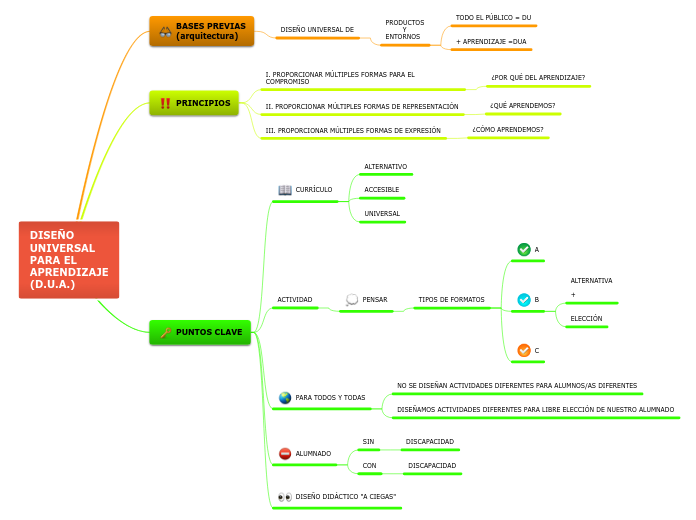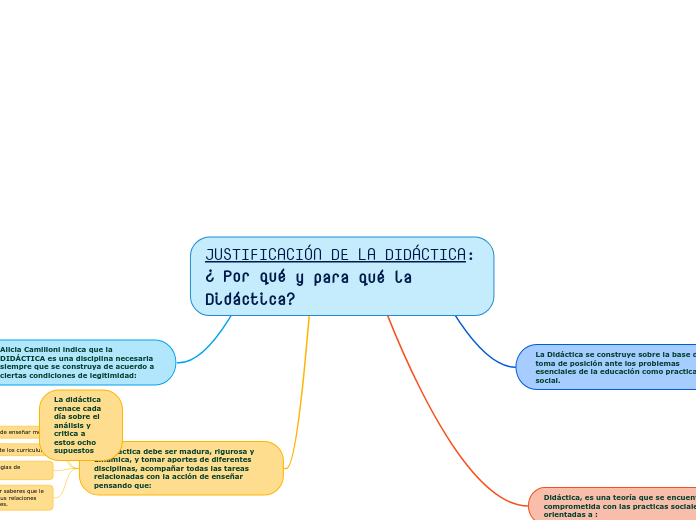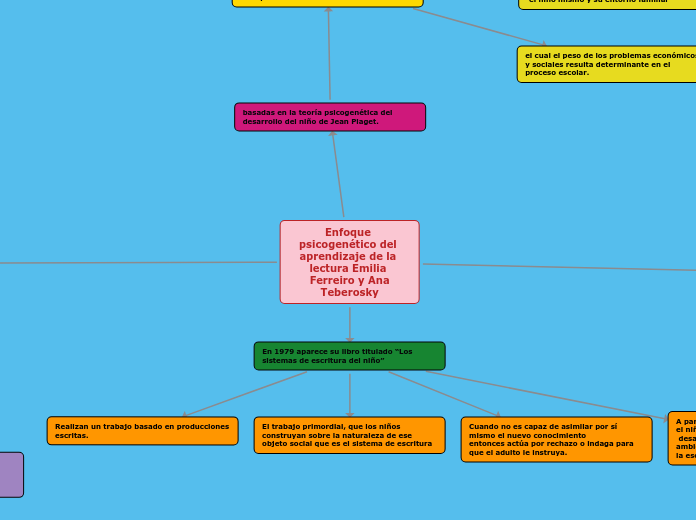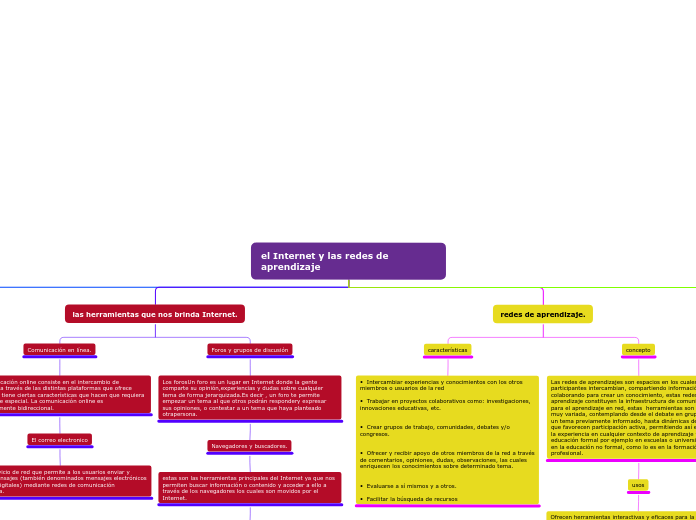DISEÑO
UNIVERSAL
PARA EL
APRENDIZAJE
(D.U.A.)
To name your story, you have to think of the overall message and what you want your audience to understand from the story. Also, make it relevant and easy to remember. Examples:
- theme: Audition, by Barbara Walters;
- main character's name: Robinson Crusoe, by Daniel Defoe;
- use of gerund to describe the plot: Waiting for Godot, by Samuel Beckett;
- time or numbers: 1984, by George Orwell;
- line that best describes the theme: Pride and Prejudice, by Jane Austen;
- key object or possessive in the story: Charlotte's Web, by E.B. White;
- story setting: Twenty Thousand Leagues Under the Sea, by Jules Verne
PUNTOS CLAVE
DISEÑO DIDÁCTICO "A CIEGAS"
ALUMNADO
CON
SIN
DISCAPACIDAD
PARA TODOS Y TODAS
DISEÑAMOS ACTIVIDADES DIFERENTES PARA LIBRE ELECCIÓN DE NUESTRO ALUMNADO
NO SE DISEÑAN ACTIVIDADES DIFERENTES PARA ALUMNOS/AS DIFERENTES
ACTIVIDAD
This is the closure section of the story.
PENSAR
Try answering these questions in order for you to come up with a closure:
- Have all problems been solved?
- Is it clear what happens with all your characters in the story?
- Has the challenged transformed your main character?
- How do the characters feel in the end?
TIPOS DE FORMATOS
C
B
ELECCIÓN
ALTERNATIVA
+
A
CURRÍCULO
This is the moment when the main character passes by the last obstacle and finally faces its great challenge.
UNIVERSAL
ACCESIBLE
ALTERNATIVO
PRINCIPIOS
III. PROPORCIONAR MÚLTIPLES FORMAS DE EXPRESIÓN
There wouldn't be any tension and excitement in your story if there weren't any obstacles that get in your character's way.
¿CÓMO APRENDEMOS?
Usually, the obstacles come in sets of three. This way, your story can evolve and be exciting for your audience.
can't swim very well, shark invasion, sea stormstrong allergy to dogs, pack of wolves, hunters invasionloses coin, finds coin but it is soon stolen, hard time deciding whether to return or not to his real lifereceives medication, fight with dangerous patient, someone reveals his escape planmemory loss, no support from family, the game takes place earlier than expectedOther
II. PROPORCIONAR MÚLTIPLES FORMAS DE REPRESENTACIÓN
Your character(s) need(s) motivation in order to solve the challenge(s).
¿QUÉ APRENDEMOS?
Why does your character need to confront this challenge? What does he/she expect to accomplish by solving it?
will marry in 3 dayshe/she loves the childcan fix the mistakes in the pastwants to help other misplace patients escapechance to win the World Chess ChampionshipOther
I. PROPORCIONAR MÚLTIPLES FORMAS PARA EL COMPROMISO
Each story has a main character and that character usually needs to solve a problem or challenge.The character's challenge is the one that creates tension throughout the story.
¿POR QUÉ DEL APRENDIZAJE?
Type in any other challenges which the main character or other characters in the story need to face.
BASES PREVIAS
(arquitectura)
DISEÑO UNIVERSAL DE
PRODUCTOS
Y
ENTORNOS
Type in the name of your character.
+ APRENDIZAJE =DUA
TODO EL PÚBLICO = DU









